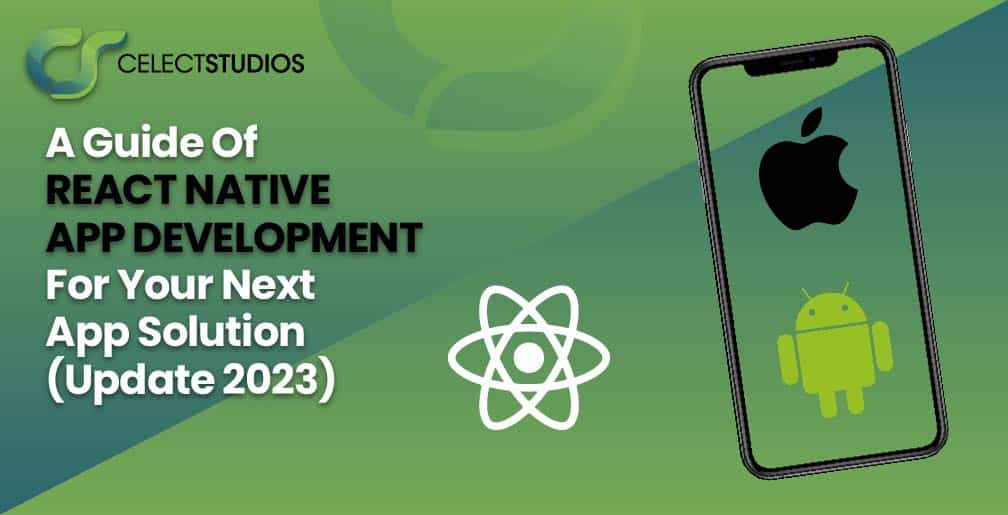The use of native UI elements to develop multi-platform Android and iOS apps? Is that possible? Hell yeah! Say hello to React Native! React Native has gotten huge popularity across a number of industries, including world’s top apps like Facebook, Uber, and Pinterest built using it. It is based on React and JavaScript framework and utilizes the very same code base used. Both frameworks: ReactJS (web) and React Native were created by Facebook. You’ll be surprised what React Native was built for! It was a Hackathon project with the goal of fixing the company’s (Facebook) biggest soft spot—maintaining two code bases for their app. This famous internal hackathon project took place in the summer of 2013. The first public preview was issued in January of 2015 at Reactjs Conference and in March of 2015, Facebook made React Native ready and available on GitHub.
How does React Native Work?
React native makes use of JavaScript to produce the app’s interface. What makes React different from its competitors for example Ionic is that React Native does not rely on webviews but the real amount of matter provided by native platforms. The language has built-in access to the native views and components, and can make use of native-written code and allow the API access to OS-specific features inside the app.
React Native utilizes the idea of “bridge”, which allows for asynchronous communication between the JavaScript and Native elements – the concept of ‘bridge’ lies at the very heart of React Native’s flexibility. Native and JavaScript elements are completely different technologies, but they are able to communicate.
There are many benefits of using this type of architecture which we will cover later in this article but the main advantage of it is using a lot of OS-native features but this does not come without challenges. One challenge is of repetitive use of bridges within the app which can cause slowing down its performance. Basically, if you’re building an app that involves a lot of data or many events then React Native might not be the best option.
What’s New In React Native 2023?
One thing which is very impressive about React Native is that you can expect updates and improvements on a regular basis. These continual improvements can make your app speed up and enhance the performance of your app to quite a bit.
Some major 2022 updates include:
The architecture has been renewed with the 0.68 version. This includes Fabric Renderer – a new contributing system and TurboModules – a brand new native modules system. So, what does this new modules system do? It improves communication between native code and Javascript. Furthermore, a new renderer coded in C++ and core is shared among platforms, making it easier to adopt React Native to different platforms.
Pros and Cons
Every programming language has some pros and some cons. Not just programming languages but even apps have some pros and cons. Some advantages and disadvantages if not all of React Native are mentioned below:
Advantages of React Native
Code Reusability
The efficient development for more than one platform at once is the mightiest advantage of React Native. Making use of the same code for different platforms has many other benefits: quick development and more time to market your app, inexpensive maintenance, and easier process of hiring (onboarding) of new developers who are joining the project. Furthermore, the same code can be used for web and mobile apps if both use React native.
Hot reloading
Hot reloading is a very interesting feature. What it does is allow developers to view the changes in their code in real-time and to skip the process of refreshing things. This helps the developer big-time as it helps him receive real time feedback on anything changed inside the code which results in high productivity.
Performance
If we compare React Native to other cross-platform development solutions, the ‘bridge’ concept is truly revolutionary. The reason why React Native is not laggy as other web-based cross-platform solutions is because it allows usage of natively written code. People claim that react Native gives ‘native-like’ performance but that may not be true. The best statement we can give over here is that React Native gives ‘near-native’ experience.
Cost Efficiency
The main reason why people go for cross-platform development is cost efficiency. The biggest appreciation over here has to go to reusing code on multiple platforms and in this way, a smaller team is needed to deliver the project. Different to native development where there are two separate teams needed to deliver two similar operating products instead of one.
Growing Community
If we talk about present day, the React native community is growing and expanding at a very big rate. A lot of credit goes to Facebook as they are constantly taking big steps in the growth and expansion of React Native. The number one advantage of so many people making the growth of React Native possible is that if someone and that someone can be you is having trouble with React Native than a number of people will be more than ready to help as everyone wants a problem-less developing world.
Evolving Constantly
React Native is a relatively new concept which has gained popularity within a very short time. The reason behind its quick success is the constant updates and new features. In this way, building more efficient and faster applications is easier.
Disadvantages of React Native
Lack of Developers
Writing native code is undoubtedly, the most powerful asset of React Native, but this means sometimes mobile app developers will need to five react native developers a hand. The helping hand story does not stop here. The same goes for publishing apps in the PlayStore and AppStore. Generally, standard mobile app developers are more used to and familiar with the procedure and necessary documentation for a successful launch.
If you are an agency, then this will not be an issue because you will have access to native mobile developers that can help give React Native team some help.
You will have to consider this definitely when you’re working with your solely own-cross platform team.
Young Technology
Because this technology is relatively new, it has some bugs, glitches, limitations, and issues which need to be taken care of. Mind you, some of the custom modules do not exist in the framework, which means developers may need more minutes to build their own new ones from scratch. This knowledge is technical to comprehend and only your partner company or your devs may tell you during the app estimation process.
Dependence on Facebook
One thing which might be scary to React Native developers and users is that its reliance of Facebook is big. If Facebook decides to stop using React Native, then others will also stop utilizing this service. But as of now, nothing such is happening. Facebook continues to use React Native in their main app and also, the Ads manager app, Facebook Analytics and Instagram.
Near-native – Not Quite Like Native
React Native is still slower than Native app development even after all of its pretty functions, qualities, and characteristics, it cannot match Native.
The Competitors of React Native
There are some direct competitors or React Native which include Ionic and Cordova. These frameworks, which are used for similar purposes, are the so-called hybrid applications. These frameworks are built with standard Web innovations and use help to WebView. Although there are not many React Native competitors, because these technology giants are very few when it comes to quality and results plus solutions. That is why we mentioned a couple of them namely Ionic and Cordova.
What is React Native Used For?
There are no limitations of using React Native. Any industry can make use of React Native. Whether it’s a manufacturing textile mill or a restaurant, or a travel agency, React Native can be used to create apps for all of them. And not just limited to these industries-all of them. You name it – and we ace it.
How Popular Is React Native?
Some of the most decorated companies which are super heavyweights in their fields use React Native to create their mobile apps. These include Instagram, Airbnb, and Facebook. Now, just go over the fact that Facebook and Instagram, apps with more than a billion users have used this technology for their apps.
In a Nutshell
React Native is one of the best cross-platform developing frameworks. There are several advantages of using this framework with minimum cons. Mostly there are advantages such as fast speed, and cost efficiency which are basic yet mighty things to consider before developing an app. Some competitors of this app include Ionic and Cordova. React Native is used in almost every industry, which means there is no limitation to its use. It is one of the most popular app frameworks because Facebook develops its apps using this framework. Instagram and AirBnb is also developed using React Native and who knows which super weight app next get built on this platform.



